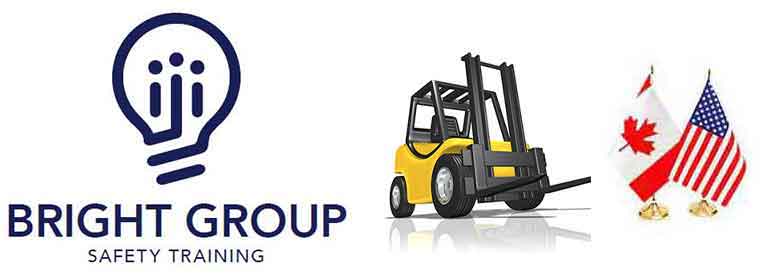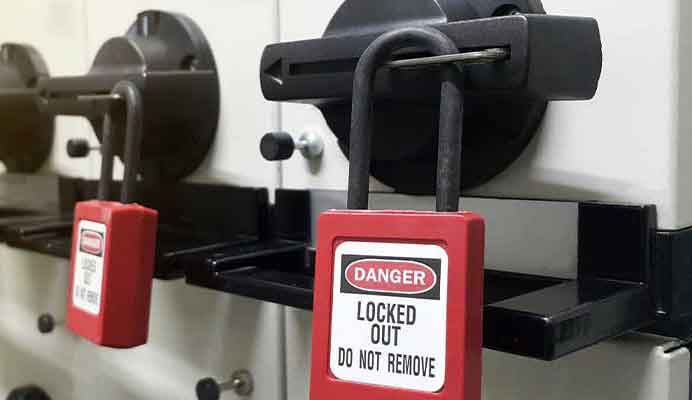LOCKOUT TAGOUT STANDARDS
Lockout Tagout training OSHA & CCOHS standard for the Control of Hazardous Energy (Lockout/Tagout), Tittle 29 of the Federal Regulations (CFR) Part 1910.147, addresses the practices and procedures necessary to disable machinery or equipment, thereby preventing the release of hazardous energy while employees perform servicing and maintenance activities. The standard outlines measures for controlling hazardous energies-electrical, mechanical, hydraulic, pneumatic, chemical, thermal, and other energy sources. In addition, 29 CFR 1910.333 sets forth requirements to protect employees working on electric circuits and equipment. This section requires workers to use safe work practices, including lockout and tagging procedures. These provisions apply when employees are exposed to electrical hazards while working on, near, or with conductors or systems that use electric energy.
How can you As An Employer Protect Your Workers?
Lockout / tagout standards establishes the employer’s responsibility to protect employees in the workplace from hazardous energy sources on machinery and equipment when service and maintenance is being performed. The standard gives each employer the flexibility to develop and customize an energy control program suited to the needs of the particular workplace and for the types of machinery and equipment being maintained or serviced in the workplace. This is generally done by affixing the appropriate lockout or tagout devices to energy-isolating devices and by de-energizing machinery and equipment. The standard outlines the steps required to do this.
What Employees Need To Know?
Employees need to be trained to ensure that they know, understand, and follow the applicable provisions of the hazardous energy control procedures. The training must cover at least three areas: aspects of the employer's energy control program; elements of the energy control procedure relevant to the employee's duties or assignment; and the various requirements of the OSHA standards related to lockout/tagout.
What Must Employers Do To Protect Their Employees?
Employees need to be trained to ensure that they know, understand, and follow the applicable provisions of the hazardous energy control procedures. The training must cover at least three areas: aspects of the employer's energy control program; elements of the energy control procedure relevant to the employee's duties or assignment; and the various requirements of the OSHA standards related to lockout/tagout.
What Employees Need To Know?
The standards establish requirements that employers must follow when employees are exposed to hazardous energy while servicing and maintaining equipment and machinery. Some of the most critical requirements from these standards are outlined below:
- Must develop, implement, and enforce an energy control program.
- Ensure that new or overhauled equipment is capable of being locked out safely.
- Use lockout devices for equipment that can be locked out. Tagout devices can be used in lieu of lockout devices only if the tagout program provides employee protection equivalent to that provided through a lockout program.
- Develop, document, implement, and enforce energy control procedures in the workplace. [See the note to 29 CFR 1910.147(c)(4)(i) for an exception to the documentation requirements.]
- Develop, implement, and enforce an effective tagout program if machinery or equipment is not capable of being locked out.
- Use only lockout/tagout devices authorized for that particular equipment or machinery and ensure that they are durable, standardized, and substantial.
- Ensure that lockout/tagout devices identify the individual users.
- Establish a policy that permits only the employee who applied a lockout/tagout device to remove it. [See 29 CFR 1910.147(e)(3) for exception.]
- Inspect energy control procedures at least annually.
- Comply with the additional energy control provisions in OSHA standards when machines or equipment must be tested or repositioned, when outside contractors work at the site, in group lockout situations, and during shift or personnel changes.
- Provide effective training as mandated for all employees covered by the standard. Must develop, implement, and enforce an energy control program.
- Ensure that new or overhauled equipment is capable of being locked out safely.
- Use lockout devices for equipment that can be locked out. Tagout devices can be used in lieu of lockout devices only if the tagout program provides employee protection equivalent to that provided through a lockout program.
- Develop, document, implement, and enforce energy control procedures in the workplace. [See the note to 29 CFR 1910.147(c)(4)(i) for an exception to the documentation requirements.]
- Develop, implement, and enforce an effective tagout program if machinery or equipment is not capable of being locked out.
- Use only lockout/tagout devices authorized for that particular equipment or machinery and ensure that they are durable, standardized, and substantial.
- Ensure that lockout/tagout devices identify the individual users.
- Establish a policy that permits only the employee who applied a lockout/tagout device to remove it. [See 29 CFR 1910.147(e)(3) for exception.]
- Inspect energy control procedures at least annually.
- Comply with the additional energy control provisions in OSHA standards when machines or equipment must be tested or repositioned, when outside contractors work at the site, in group lockout situations, and during shift or personnel changes.
- Provide effective training as mandated for all employees covered by the standard.
Some of the above OSHA Standards apply to the CCOHS Standards



